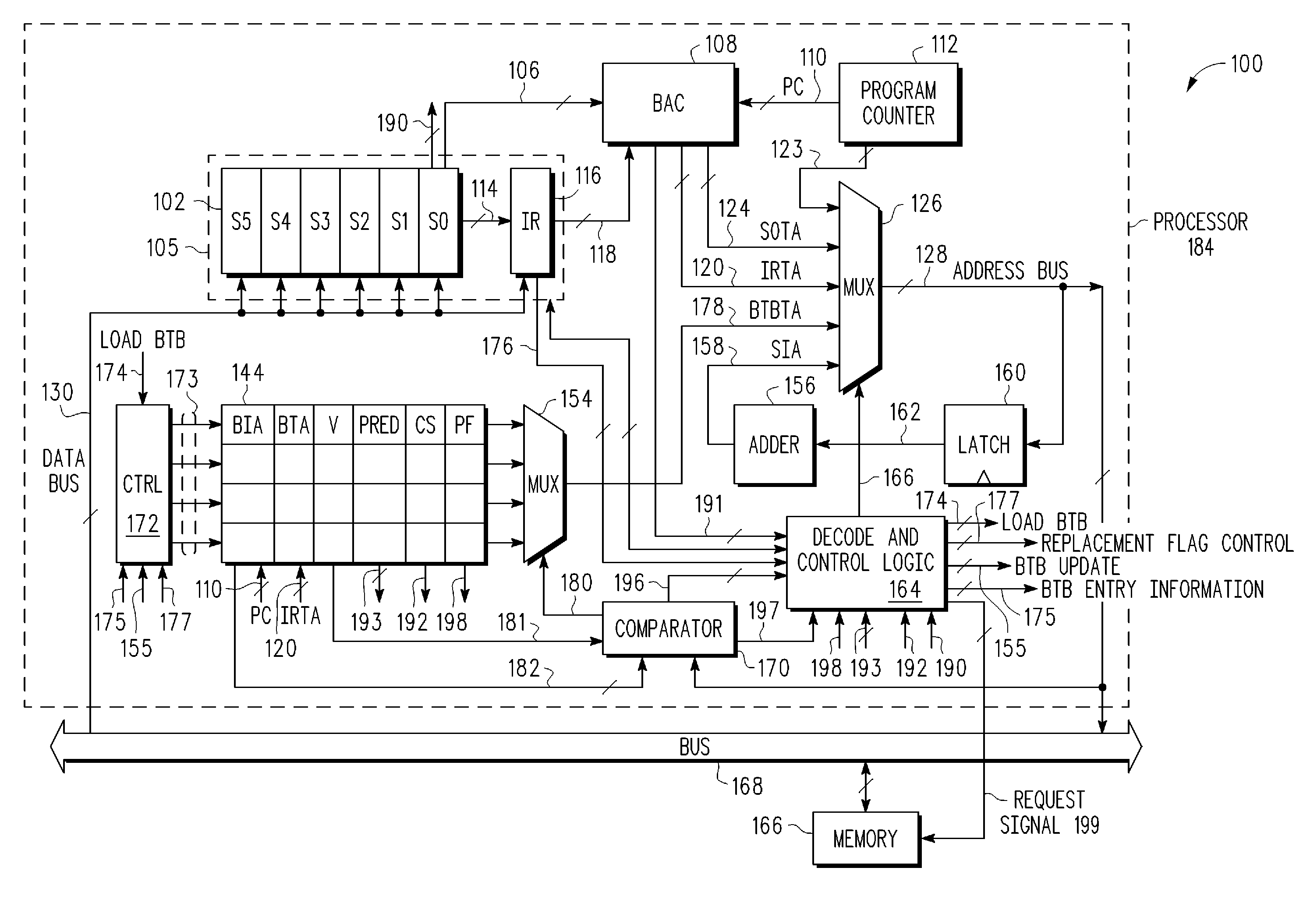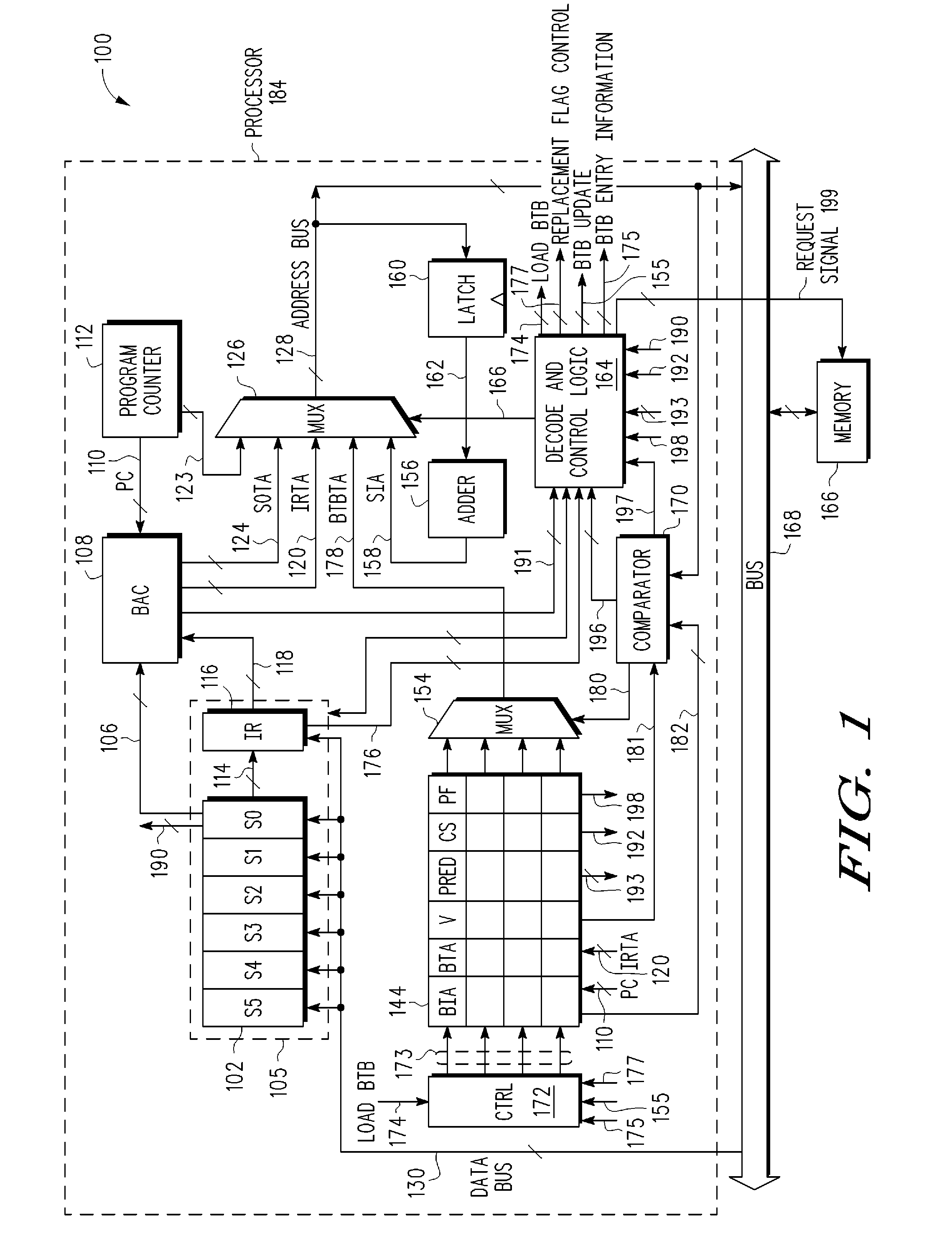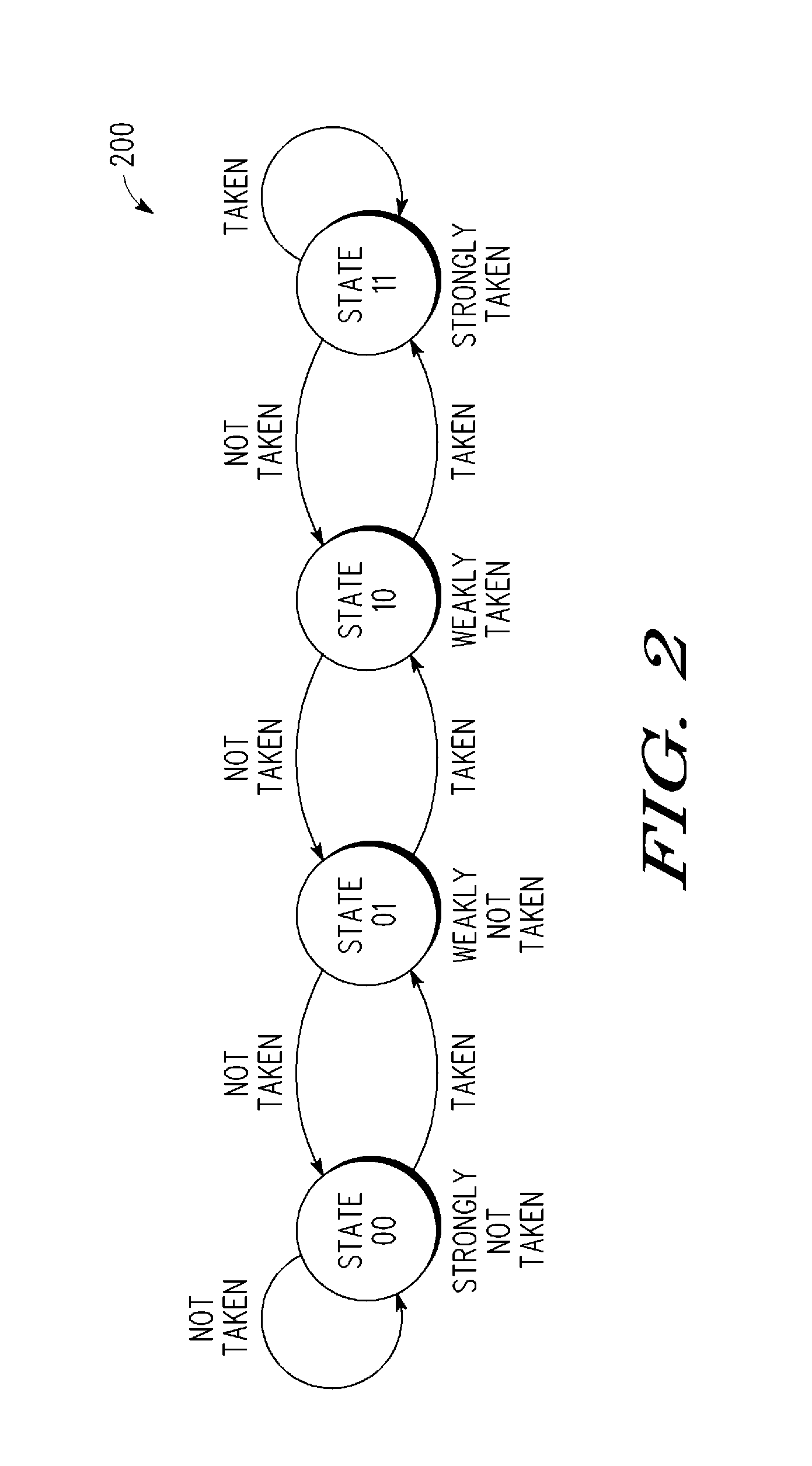Metric for selective branch target buffer (BTB) allocation
a branch target buffer and target buffer technology, applied in the field of data processing systems, can solve the problems of lowering the hit rate of the branch target buffer, and the approach is inefficien
- Summary
- Abstract
- Description
- Claims
- Application Information
AI Technical Summary
Problems solved by technology
Method used
Image
Examples
Embodiment Construction
[0015]In various embodiment described herein, allocation of a taken branch in a branch target buffer (BTB) may be conditioned on a variety of different criteria. In one embodiment, the decision whether to allocate the taken branch in the BTB is based on information of the entry that is identified to be replaced in the BTB for allocation. For example, the decision whether to allocate may be based on a branch predictor state of the identified entry to be replaced. In one embodiment, the decision may be based on cycle saving information of the new branch that is to be allocated into the BTB, such as on the cycles that could be saved on a subsequent access to the new branch if that new branch were in the BTB. In one embodiment, when a new branch is allocated into the BTB, this cycle savings information is stored as well. In this manner, the decision of whether or not to allocate may instead be based on a relative cycle saving between the new branch to be stored upon allocation into the ...
PUM
 Login to View More
Login to View More Abstract
Description
Claims
Application Information
 Login to View More
Login to View More - R&D
- Intellectual Property
- Life Sciences
- Materials
- Tech Scout
- Unparalleled Data Quality
- Higher Quality Content
- 60% Fewer Hallucinations
Browse by: Latest US Patents, China's latest patents, Technical Efficacy Thesaurus, Application Domain, Technology Topic, Popular Technical Reports.
© 2025 PatSnap. All rights reserved.Legal|Privacy policy|Modern Slavery Act Transparency Statement|Sitemap|About US| Contact US: help@patsnap.com



